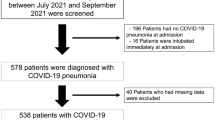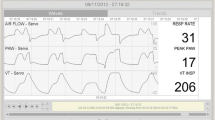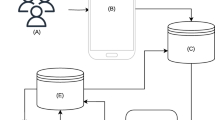Abstract
Predicting barotrauma occurrence in intensive care patients is a difficult task. Data Mining modelling can contribute significantly to the identification of patients who will suffer barotrauma. This can be achieved by grouping patient data, considering a set of variables collected from ventilators directly related with barotrauma, and identifying similarities among them. For clustering have been considered k-means and k-medoids algortihms (Partitioning Around Medoids). The best model induced presented a Davies-Bouldin Index of 0.64. This model identifies the variables that have more similarity among the variables monitored by the ventilators and the occurrence of barotrauma.
Access this chapter
Tax calculation will be finalised at checkout
Purchases are for personal use only
Preview
Unable to display preview. Download preview PDF.
Similar content being viewed by others
References
Koh, H., Tan, G.: Data mining applications in healthcare. J. Healthc. Inf. Manag. 19(2), 64–72 (2005)
Anzueto, A., Frutos-Vivar, F., Esteban, A., Alía, I., Brochard, L., Stewart, T., Benito, S., Tobin, M.J., Elizalde, J., Palizas, F., David, C.M., Pimentel, J., González, M., Soto, L., D’Empaire, G., Pelosi, P.: Incidence, risk factors and outcome of barotrauma in mechanically ventilated patients. Intensive Care Med. 30(4), 612–619 (2004)
Al-Rawas, N., Banner, M.J., Euliano, N.R., Tams, C.G., Brown, J., Martin, A.D., Gabrielli, A.: Expiratory time constant for determinations of plateau pressure, respiratory system compliance, and total resistance. Crit Care 17(1), R23 (2013)
Boussarsar, M., Thierry, G., Jaber, S., Roudot-Thoraval, F., Lemaire, F., Brochard, L.: Relationship between ventilatory settings and barotrauma in the acute respiratory distress syndrome. Intensive Care Med. 28(4), 406–413 (2002)
Oliveira, S., Portela, F., Santos, M.F., Machado, J., Abelha, A., Silva, A., Rua, F.: Predicting plateau pressure in intensive medicine for ventilated patients. In: Rocha, A., Correia, A.M., Costanzo, S., Reis, L.P. (eds.) New Contributions in Information Systems and Technologies, Advances in Intelligent Systems and Computing 354. AISC, vol. 354, pp. 179–188. Springer, Heidelberg (2015)
Portela, F., Santos, M.F., Machado, J., Abelha, A., Silva, A., Rua, F.: Pervasive and intelligent decision support in intensive medicine – the complete picture. In: Bursa, M., Khuri, S., Renda, M. (eds.) ITBAM 2014. LNCS, vol. 8649, pp. 87–102. Springer, Heidelberg (2014)
Turban, E., Sharda, R., Delen, D.: Decision Support and Business Intelligence Systems. 9a Edição. Prentice Hall (2011)
Anderson, R.K.: Visual Data Mining: The VisMiner Approach, Chichester, West Sussex, U.K., 1st edn. Wiley, Hoboken (2012)
Han, J., Kamber, M., Pei, J.: Data Mining Concepts and Techniques. 3a Edição. Morgan Kaufmann (2012)
Xindong, W., Vipin, K.: The Top Ten Algorithms in Data Mining. CRC Press–Taylor & Francis Group (2009)
Author information
Authors and Affiliations
Corresponding author
Editor information
Editors and Affiliations
Rights and permissions
Copyright information
© 2015 Springer International Publishing Switzerland
About this paper
Cite this paper
Oliveira, S. et al. (2015). Clustering Barotrauma Patients in ICU–A Data Mining Based Approach Using Ventilator Variables. In: Pereira, F., Machado, P., Costa, E., Cardoso, A. (eds) Progress in Artificial Intelligence. EPIA 2015. Lecture Notes in Computer Science(), vol 9273. Springer, Cham. https://doi.org/10.1007/978-3-319-23485-4_13
Download citation
DOI: https://doi.org/10.1007/978-3-319-23485-4_13
Published:
Publisher Name: Springer, Cham
Print ISBN: 978-3-319-23484-7
Online ISBN: 978-3-319-23485-4
eBook Packages: Computer ScienceComputer Science (R0)




